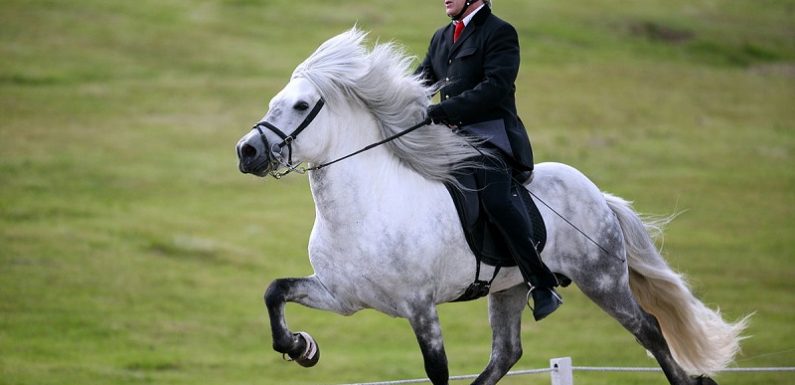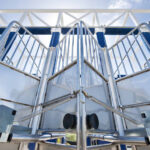
It is important to maintain safety which approaching and catching a horse. To start with your can alert him on your arrival before approaching him closely. This gives him an opportunity to relax. Never approach a horse from front or behind. Approach him on the sides. It is important to touch its shoulders or neck by gently stroking the horse. Be extra careful while entering the paddock as it may have many horses and there are chances that you may get kicked or jostled in the process. Never take food into a group of horse as it can entice the horses and they tend to crowd around you. It could also lead to a food fight.
While leading a horse always ensure the rope is attached to the halter of the horse instead of the grasping halter itself. Do not attempt to coil the end of the rope around your hand, this could lead to the tightening of the loops, so remember to fold it forth and back and then grasp it in the middle. It is also important to prevent being dragged around the ground. Never allow your horse to touch noses with unacquainted horse as it could lead them to a fight as they strike each other. Be cautious especially when you are mounted on the horse.
The horse should be tied with their eye high, not far away from your arms length. The knot should be as high as the eye of the horse and the distance between the halter and the knot need to be at your arm’s length. The horse should be tied to a solid and safe object with the help of a breakaway string or release knot. The fingers have to be away from the loop when you tie the knot. Ensure you tie with the lead and halter and never use bridle reins.
 While grooming your horse stand by the shoulder or close to the hindquarter than behind or front. If you want to walk the horse from behind, first go close and brush him and then with a hand on the rump while you pass around. Also ensure you are far away from the kicking range. Prevent ducking below the tie rope as you might encourage the horse to pull back.
While grooming your horse stand by the shoulder or close to the hindquarter than behind or front. If you want to walk the horse from behind, first go close and brush him and then with a hand on the rump while you pass around. Also ensure you are far away from the kicking range. Prevent ducking below the tie rope as you might encourage the horse to pull back.
It is advised never to fight a reluctant horse while you are trying to get him onto the trailer. Seek professional help when needed. As the horse is in the trailer, first close the back door before you hitch him to the tie. While unloading, the horse has to be untied before opening the trailer rear, so that he is protected from moving backward and hitting the rope end. This could panic him and he tends to pull back.
When you decide to turn the horse loose, ensure his head is backward pointing to the gate and put a step forward before slipping off the halter. It can prevent him kicking his heels in freedom.
While feeding before horse riding, keep the treat in the palm of your hand flattened to prevent being nipped.





